✅ Please Subscribe To The Channel and Join Us In Our Journey To 30k subs
https://www.youtube.com/@ESNGOLF?sub_confirmation=1
20 Times Golf Officials RUINED The PGA
Watch next –
00:00 Dustin Johnson
01:33 Bunker relief
02:46 Scorecard Nightmare
03:57 Sand trap
04:52 Chip-in Controversy
06:12 Two-Stroke Shock
07:26 Invisible Touch
09:06 Ernie Els Confusion
10:24 Michelle Wie DQ
11:36 Tiger Woods
12:51 Relief gone wrong
14:14 Bunker Blunder
15:41 Crazy shot
16:53 What the…
18:01 MW
19:01 Davis
20:23 Juli Inkster
21:25 Trouble in paradise
22:37 Bomb Drop
Contact Us –
Business inquiries: esngolfbusiness@gmail.com
Copyright issues? Reach out at esngolfbusiness@gmail.com
Copyright Disclaimers –
Our content is used in adherence to YouTube’s Fair Use guidelines. This may include copyrighted video clips and images used under U.S. Copyright Act Section 107 for commentary, news reporting, educational purposes, and more, without specific authorization from copyright holders.
#lpga #golf #pga
From unbelievable decisions that led to major drama to golf officials enforcing their own rules, these are 20 times rules officials ruined the game of golf. And first, we start with number 20. This should have been the coronation. Dustin Johnson, one of the most dominant ball strikers in the game, was finally about to claim his first major title at Oakmont. But leave it to the USGAA to nearly ruin the moment. It started back on the fifth green. Johnson addressed his ball and it moved barely. So slightly in fact that you needed a super zoom camera to even notice it. Something invisible to the naked eye. DJ immediately called over a rules official and said he hadn’t caused it. The official let him play on. Crisis averted. Right. Not even close. Seven holes later on the 12th Tox mid round, deep in contention, Johnson was informed that the USGAA had reopened the case. After analyzing video for what felt like an eternity, they decided one stroke penalty retroactively. That’s right. Johnson played the rest of the US Open, not even knowing his own score. In the end, he won by three strokes, making the penalty irrelevant on paper. But the damage was already done. The broadcast turned into a rules debate. The fans were furious. Players ripped the USGA for the confusion. and Johnson’s long-awaited major moment tainted by officiating chaos. He handled it like a pro. But let’s be honest, when you need a NASA level zoom to enforce a rule, you’re no longer protecting the game, you’re just embarrassing it. For number 19, let’s head to the windswept coast of Scotland for the 2023 Scottish Open, where Matt Fitzpatrick found himself trapped in one of golf’s most frustrating corners, the gray area of the rule book. It happened on a seemingly ordinary hole. Fitzpatrick’s T-shot found a bunker. Not the middle, not the flat, the face. His ball was plugged deep into the steep wall of sand. He called for relief, thinking it was unplayable. A dangerous lie. A total no-go. But the officials, they took one look and said, “Nope. You can play it.” Fitzpatrick, clearly stunned, pleaded his case. The ball was embedded. No stance, no shot. But the ref wasn’t budging. Left with no choice, Fitzpatrick hacked it out the best he could and walked away furious. Later, he didn’t hold back, calling the ruling ridiculous. And he wasn’t alone. Fans and analysts quickly jumped in, pointing out other players who had received similar relief that same week. So, what made Fitzpatrick different? That’s the question nobody could answer. And that’s why this moment didn’t just sting. It exposed the inconsistency of rulings that should be black and white but somehow always end up in shades of gray. Coming in at number 18, the year is 2000 and Padrick Harrington has just put together a masterclass of a final round at the Benson and Hedges International Open. He shoots a blistering 64. He’s in the clubhouse, the crowd’s buzzing, and it looks like the trophy is all but his. But then the celebration hits a wall. Just moments after finishing, Harrington is pulled aside by tournament officials. And what they tell him, it hits like a gut punch. You’re disqualified. Why? Because on one single hole, his playing partner marked a four instead of a five. Harington, probably still riding the high of that round, didn’t catch it before signing his card. No bad intent, no cheating, just a simple human mistake. But the rule book doesn’t care. DQed on the spot. His 64 wiped off the board. The win gone. The trophy handed to someone else. And just like that, the guy who’d earned the victory with his clubs lost it at the scorer’s table. Thanks to a rule that punished an honest mistake more than it would a blatant cheat. It wasn’t just heartbreaking. It was the kind of moment that makes fans wonder, is this really what the game’s about? Which brings us to number 17. It’s the 2012 Saibas Matchplay Championship. and Paula Kmer is locked in a tight quarterfinal battle with Azahara Munoz. Things are tense. Every hole feels like a fist fight. Then they step onto the 12th where things take a bizarre turn. Creamemer steps into a greenside bunker. She’s lining up her shot. Nothing dramatic, just getting ready. But at some point, her club lightly brushes the sand. No big deal, right? Wrong. Officials call it a violation of rule 13 to4. Grounding the club in a hazard. It doesn’t matter that it gave her no advantage. Doesn’t matter that it barely even disturbed the surface. The penalty, automatic loss of hole. That one ruling shifted the entire match. Creamemer lost the hole, lost her momentum, and eventually lost the match. Sometimes golf isn’t about who plays better. It’s about who avoids waking up the rules official. Up next, number 16. Every golfer dreams of the perfect moment. The clutch shot that seals the win. At the 2020 Memorial Tournament, John Rohm had exactly that. On the par 316th hole, Rahm faced a tricky chip shot. He struck it clean, the ball rolled out perfectly and dropped straight into the cup. It looked like the exclamation point on a brilliant victory. Crowd goes wild, cameras flashing, Rohm pumps his fist. But in the shadows of Mirfield Village, the rules officials weren’t celebrating, they were rewinding. In ultra slow motion highdefinition replay, someone noticed that Rahm’s ball had slightly moved when he set his club behind it. Not during the swing, not visible to the naked eye. Just a tiny imperceptible twitch you could only catch if you were squinting at a 4K monitor. Result: two-stroke penalty. Rom took it like a champ. He even said the ball did move. It’s as simple as that. But let’s be honest, this wasn’t about cheating or gaining an advantage. This was about technology being used like a microscope to ruin the flow of the game. Thankfully, ROM still won by three. But the moment was tainted and the golf world was left asking a hard question. When the rules need super slow-mo just to catch a violation, are we still protecting the game or just killing it? For number 15, we head to the final round of the 2001 Honda Classic where Scott Ho was doing exactly what you’re supposed to do in crunch time. staying focused, taking his time, trying to win a tournament. But apparently the rules officials had a different idea. Hulk had been paired with Joseé Kosherus and the group was warned for slow play. That’s standard. But what came next? Not so much. After officials decided Hook had taken too long over a couple shots, boom, they slapped him with a two-stroke penalty. No grace period, just penalty. And they didn’t wait until after the round or even the next hole. No, they hit him with it right in the middle of the final round. Imagine being deep in the pressure cooker of Sunday golf and suddenly you’re told, “Hey, you’re two shots worse now. Good luck catching the leader.” Hulk fought on and actually managed to finish just one stroke behind the winner. One stroke meaning without that sudden mid round penalty, he would have gone to a playoff, possibly even one. Instead, the officials decided pace was more important than fairness. And just like that, the chance at a title vanished, thanks to one of the most brutal timing decisions we’ve ever seen. Here we are at number 14. Now, imagine playing in a major playoff, pressure sky-high, everything on the line, and then losing because of something you didn’t even know happened. That’s exactly what went down at the 2016 US Women’s Open. Anna Nordfist and Britney Lang were locked in a tense three-hole playoff at Cordvall. On the second playoff hole, Nordfist stepped into a fairway bunker and launched her approach shot. Clean strike looked perfect. But back in the broadcast truck, the slow motion cameras were doing what slow motion cameras do best, catching stuff no one can see in real time, and they found it. A single grain of sand kicked up as Nordfist took her back swing. Officials spent minutes analyzing it frame by frame. Then they made their call. A two-stroke penalty for touching the sand. But here’s where it turns from bad to outrageous. They told Britney Lang first. Lang was aware before hitting her next shot. Nordfist still completely in the dark. She hit her approach into the final playoff hole, thinking she was still tied. Only then did the officials walk up and drop the bomb. You’re two shots behind. Lang, already playing it safe with the upper hand, closed it out and won by three. Nordfist was left blindsided, emotional, and empty-handed. But that wasn’t the end of the story, because the outcry actually led to change. The naked eye standard was introduced to stop this kind of thing from happening again. But that rule change didn’t help Nordfist. She didn’t lose because she played worse. She lost because the rules team played favorites with the information. And if that’s not rigging the ending, I don’t know what is. Now, here’s unlucky number 13. It’s the final round of the 1994 US Open at Oakmont. Ernie Ell is chasing his first major, and the pressure is skyhigh. Then comes the very first hole, and his T-shot dives straight into the thick, gnarly rough. But that’s not the problem. The real issue, his ball ends up right behind a massive TV crane. Obstruction, yes. But removable, also, yes. Because this thing was on wheels and had been moved several times that day. The rule says if it’s movable, you move it. But the on-site rules official, Dr. Trey Holland, saw it differently. He declared it a temporary immovable obstruction and gave L’s free relief. That drop gave El’s a clean lie instead of the jungle he was actually in. He still made bogey sure, but that better lie likely saved him from something way worse. And here’s the kicker. The USGA later admitted it was a mistake. He never should have gotten that relief in the first place, but by then it was already history. El’s made the playoff. He won the tournament. So, the question remains, what if he had to play it as it lay? Would he have even made it to the playoff? We’ll never know. But one bad call on the first hole of a major changed everything and it came from the very people who were supposed to protect the game’s integrity. Number 11 takes us to a legendary moment that was supposed to be a celebration. Michelle Wi’s professional debut. The teenage phenom had just turned pro, signed million-dollar endorsement deals, and was ready to take the golf world by storm. All eyes were on her at the 2005 Samsung World Championship. And through three rounds, she was right in the mix, holding her own, proving she belonged, but then it all fell apart. Not because of her swing, not because of pressure, but because of a reporter. After Saturday’s round, a journalist noticed something odd. On the seventh hole, Michelle had taken a drop from a lateral hazard, but apparently it wasn’t quite far enough from the hazard line. He said nothing during the round. Nothing immediately after. Instead, he approached officials the next day after she’d already signed her scorecard. The ruling disqualification. Two strokes should have been added for the improper drop. And because they weren’t, boom, DQ for an incorrect scorecard. Michelle was blindsided. She’d finished her round. She was answering press questions. She was ready to keep climbing. And then a retroactive call from a nonofficial ended it all. Thank you, a reporter. Nicely ruined. Coming in at number 10, we’re at Augusta National in 2013, golf’s most sacred ground. And Tiger Woods chasing his fifth green jacket is in full-on attack mode. Then comes the 15th hole. Tiger sticks his approach shot, but gets a brutal bounce off the flag stick. It ricochets into the water. painful, but he keeps his cool, takes a drop, and hits a beauty close to the pin. He walks off thinking par. But someone watching at home, they saw something they didn’t like. Turns out Tiger dropped the ball a few feet behind the original spot. Just enough to raise eyebrows. A viewer called it in. That’s right, a viewer. Not an official, not his playing partner, a guy on his couch. The next morning, Augusta officials reviewed the tape. Tiger had broken the rule. The drop wasn’t legal. By the letter of the law, it should have been a disqualification, signing an incorrect scorecard, but instead they gave him a two-stroke penalty and let him keep playing. The golf world exploded. Some said Tiger got special treatment. Others said the Masters just didn’t want to DQ the biggest star in the sport. Either way, it cast a shadow over the tournament and raised a massive question. Was it about protecting the rules or protecting the ratings? Next, number nine. It’s Sunday morning at the 2022 FedEx St. Jude Championship and Cameron Smith is right there. Two shots off the lead, staring down a shot at world number one and a monster $18 million FedEx Cup payday. Then before he can even warm up, the PGA Tour delivers a gut punch. Officials pull him aside with a quiet bombshell. They’d been reviewing footage from Saturday where Smith found the water on the par 34th. He took a drop, played it clean, made bogey, moved on. But now they claim his ball had settled on the red penalty area line, not outside it. And according to the rules, that meant he hadn’t taken full relief. The penalty, two strokes, handed down the next day before the final round. Not during the round, not right after, the next morning. Smith went from two shots back to four just like that. He opened strong with a birdie, but the spark faded. He shot even par 70 and finished tied for 13th six shots back. To make matters worse, a nagging hip injury forced him to skip the next playoff event. And that’s the part that stings because we’ll never know. Did that penalty cost him the FedEx Cup? The $18 million, the numbers one spot. All we know is this. Cameron Smith didn’t get beat by the course. He got beat by a line of paint and a ruling that came a day too late. Number eight takes us to Whistling Straits, final round of the 2010 PGA Championship. Dustin Johnson is standing on the 72nd hole with a one-shot lead and a major title within reach. Then comes the drive. It sails right into a scruffy, trampled patch of sand, stomped flat by thousands of spectators. It doesn’t look like a bunker. It doesn’t play like a bunker. No rake, no lip, no warning. Just sand that had been turned into a footpath by the crowd. Johnson grounds his club, totally normal, because to him, this is a waste area, not a hazard. He finishes the hole with a bogey, thinking he’s headed for a playoff. But as he walks off the green, a rules official stops him and delivers the worst kind of news. You grounded your club in a bunker. Two-stroke penalty. Just like that, he’s not in a playoff. He’s not even close. He’s out. The kicker. Whistling Straits had a local rule that classified every patch of sand on the course as a bunker, even the ones outside the ropes trampled by fans. A rule that many players didn’t even know existed. And in that moment, one of golf’s rising stars was blindsided by a technicality almost no one saw coming. The golf world erupted. Commentator David Farad called it one of the worst decisions in the history of major championship golf. It wasn’t poor play that cost DJ a major. It was poor communication and a course setup so confusing it made sand feel like quicksand. Coming in at number seven, you’re leading the masters. Two strokes ahead. The biggest win of your life is within reach. That was Jeff Maggret’s reality on Sunday at Augusta in 2003. He wasn’t just in contention. He was out in front, cool, focused, ready to claim his first major. And then disaster struck in the weirdest, most unlucky way imaginable. On the third hole, after finding a fairway bunker, Maggurt pulled out a wedge to play it safe. But his shot clipped the lip of the bunker, popped straight up, and slammed into his own chest. Now, under the rules at the time, that counted as a two-stroke penalty just for accidentally deflecting the ball off your own body. One second he’s saving par, the next he’s carding a triple bogey. But here’s the twist. Under today’s rules, that chest ricochet, it’s perfectly legal. No penalty, no disaster, no career-crushing moment on the third hole. It was such a ridiculous rule punishing players for something they clearly didn’t do on purpose that golf’s governing bodies had no choice but to change it years later. Too late for Maggot, though. He didn’t just get hit by his own ball, he got hit by a rule that never should have existed in the first place. All right, number six. And picture this. You’re standing over a crucial 15- ft par putt during a playoff at the US Open. Everything’s on the line. history, glory, your entire career, and then you spot a tiny bug sitting on your golf ball. That’s where Lloyd Mangram found himself at Marion in 1950. Without thinking, without hesitation, he reached down, picked up his ball, and blew the bug off. It took maybe 2 seconds. It didn’t affect his lie. It didn’t help his shot. It didn’t change a thing except for one brutal detail. It broke the rules. Back then, touching your ball without permission was a two-stroke penalty. even for something as harmless as flicking off a bug. Officials hit him with the penalty immediately. Two shots gone. His chance to win the US Open gone. And just like that, Ben Hogan, already a legend, cruised to victory by four shots. All because of a rule so strict, so absurd that today it sounds almost like a bad joke. A tiny bug cost Lloyd Mangram a major championship. But really, it wasn’t the bug that beat him. It was the rule book. Sliding into our top five, we fast forward to 2010. Michelle Wii is deep in contention at the Kia Classic. Final round. Pressure mounting. Every shot matters. She finds herself near a hazard. Awkward stance, unstable footing. As she’s trying to regain her balance, she instinctively leans on her club. Not to line up the shot, not to improve her lie, just to keep from falling over. But golf rules, they don’t care about instincts. Moments later, officials inform her she’s being slapped with a two-stroke penalty for grounding her club in a hazard. She tries to explain she wasn’t addressing the ball. She was off balance, but the ruling stands. Two shots gone. And just like that, momentum crushed. Her chances of climbing the leaderboard over. All because she tried not to eat dirt. The worst part, there was no advantage gained, no cheating, just a player trying to stay upright. But in golf, logic doesn’t always beat the rule book. And once again, the officials weren’t just enforcing the game, they were deciding it. Up next, number four, imagine this. You fight your way into a sudden death playoff. You’re one good hole away from your first PGA Tour win, and millions are watching. That was Brian Davis at the 2010 RBC Heritage. In regulation, he’d gone flag hunting at Harbortown’s iconic 18th and nailed it, setting up the birdie he needed to force a playoff against Jim Furick. Sudden death, everything on the line. Back in the fairway, Davis went aggressive again, but this time he missed just left into the hazard. His ball came to rest on sand among sticks and weeds. He stepped in carefully, lined up his shot, but as he pulled the club back, barely noticeable, he clipped a loose weed. No one else saw it. No one called it out, but Davis did. He immediately stopped, called over rules official Slugger White, and self-reported the possible violation. After review, it was confirmed. Two-stroke penalty for moving a loose impediment in a hazard. Furick won the playoff without breaking a sweat. And Davis still waiting for that first PGA Tour win despite earning more than $13 million in career prize money. But Davis didn’t lose because he played bad golf. He lost because of a rule so unforgiving it turned a meaningless twitch into a career-defining penalty. He followed the rules, but the rules, they failed him when it mattered most. Counting down to number three at the 2010 Safeway Classic, Julie Inkster was right in the hunt. Just three strokes back heading into the final round, the Hall of Famer was perfectly positioned for a charge. But instead of chasing the lead on Sunday, she found herself thrown out of the tournament before she even got the chance. Why? Because of a donut. Not the kind you eat, the kind you slide onto a golf club to add weight during warm-ups. While waiting on a long backup at the 10th T, Inkster grabbed her nine iron, slipped on the weighted training aid, and took a few easy swings to stay loose. Totally harmless, totally instinctive, and according to the rules, totally illegal. But here’s the kicker. No one on the course noticed. No official, no competitor. The DQ only came after a viewer watching at home emailed the LPGA. The verdict? Disqualification for using a training aid during the round. One swing with a weighted donut during a T-box delay. And a tournament contender was erased from the leaderboard. Coming in at number two, we’ve got a moment so petty, so nitpicky, it could only come from the tangled web of golf’s rulebook. It’s the 1987 Andy Williams Open and Craig Stadler aka the Walrus is grinding through his round. He ends up under a tree facing a tough shot on his knees. So, like any reasonable human being trying not to wreck his pants, he lays down a towel before kneeling. Shot fired, he moves on. No one on site says a word. Not his playing partners, not the rules officials, not a soul, but someone watching at home. Oh, they were locked in. A TV viewer spotted the towel and decided to call it in the next day. And just like that, Stadler’s tournament unraveled. Because he hadn’t declared the towel as part of his stance, officials ruled that he’d improved his lie. An illegal action. And since he didn’t count the penalty on his card, that meant one thing, disqualification for signing an incorrect scorecard. He wasn’t even told during the round. He finished, went home, and only found out after the fact that he was DQed over a towel. A towel. That’s not just ruining someone’s round. That’s ruining the entire sport. And finally, the big number one with a moment so bizarre, so outrageous that it literally changed the rules of golf. It’s the final round of the 2017 ANA Inspiration. Lexi Thompson is in full control, playing lights out, leading the pack, and looking destined to win another major. She walks off the 12th green, confident, calm, focused. Then boom, an LPGA official pulls her aside and delivers the kind of news that makes your stomach drop. Lexi, you’ve just been assessed a four-stroke penalty. Why? Not because a referee saw something. Not because her opponent called her out. No, because someone watching on TV from their couch emailed in a tip that Lexi had incorrectly replaced her ball the day before on the 17th green. A full day later, officials reviewed the footage and agreed. Two strokes for the bad placement, two more for signing an incorrect scorecard. Lexi was stunned. The cameras caught her literally asking, “Is this a joke?” She still fought like hell, rallied to force a playoff, but the damage was done. She lost and the golf world exploded with outrage. Fans, players, even analysts called it one of the most unfair rulings in modern history. The LPGA and USGA were roasted for letting couch refs decide tournaments. In the end, this meltdown forced a major rule change. Viewer call-ins were banned, but that didn’t help Lexi. Her shot at a second major gone, thanks to a fan with a DVR and a rules committee that waited 24 hours to act. Talk about ruining the game. Oh, and now that you’re still with us, we have another great golf video for you to watch right in the middle of the screen.

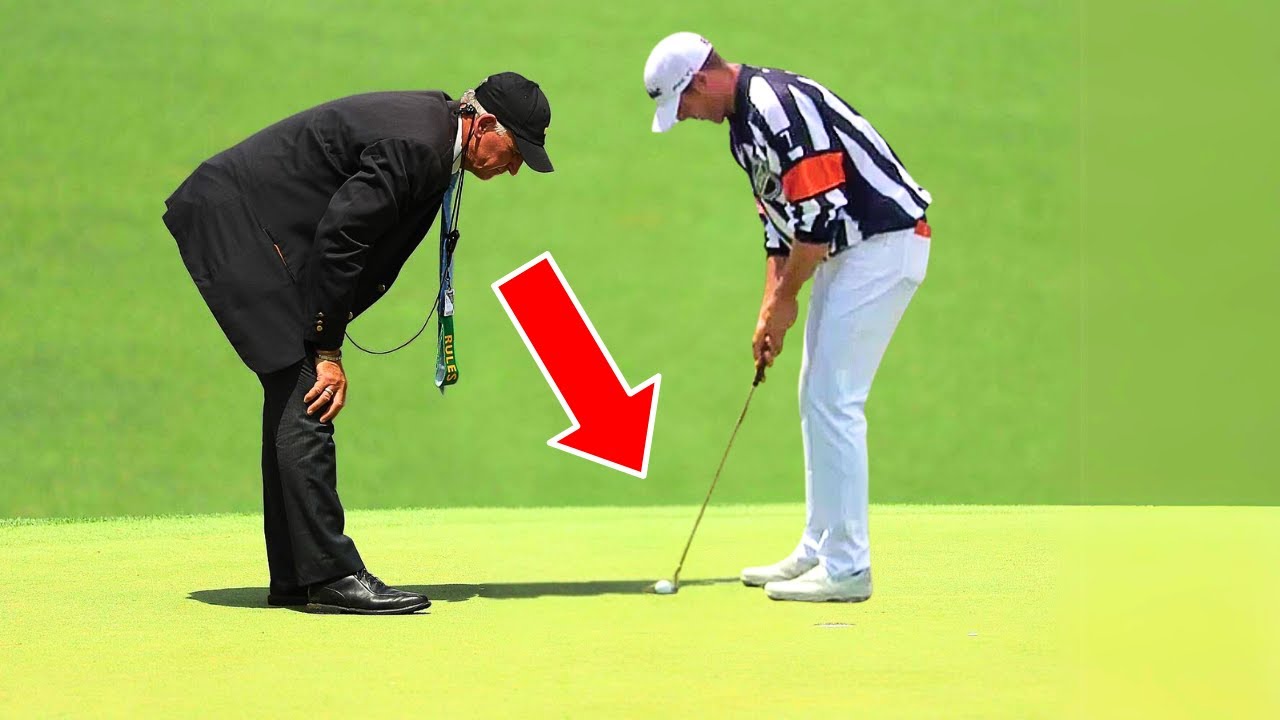

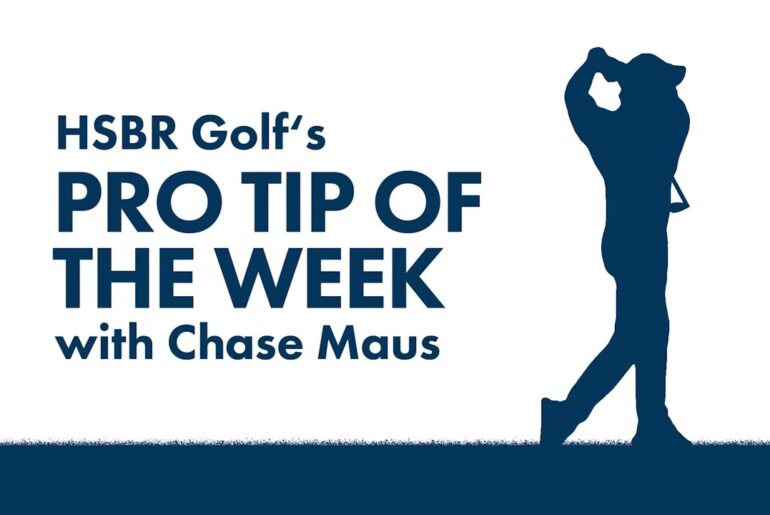
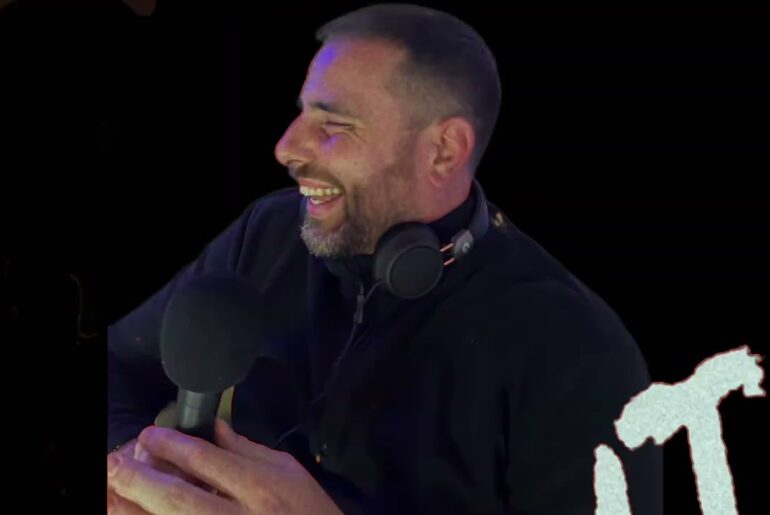
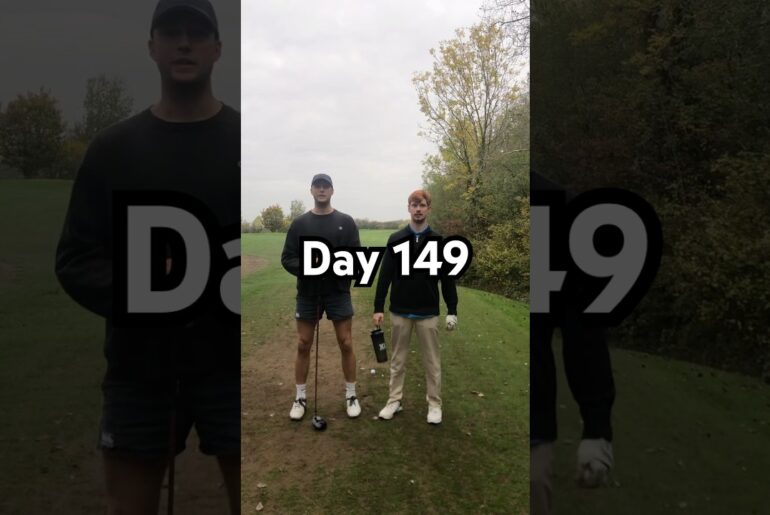

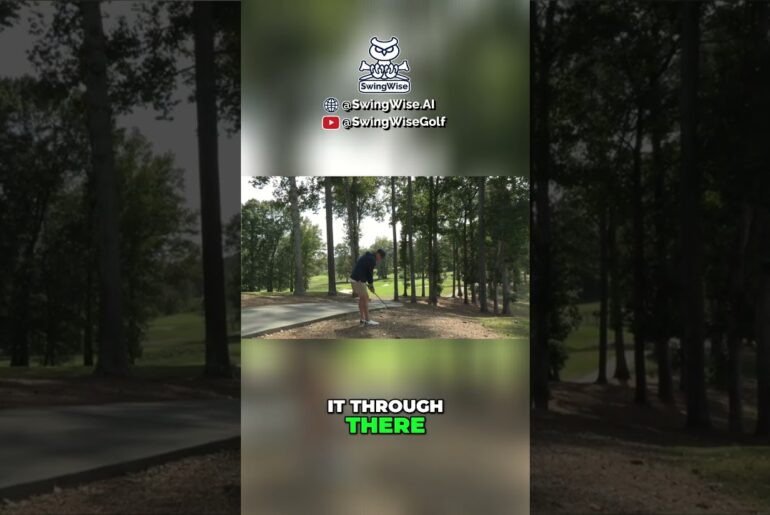
23 Comments
Fairly easy fix for the high def slow mo micromanaging of the rules. Go back to the honour system. If the player, the competitors in the group and the caddies don’t see an infraction then don’t even take the email or call from a fan that reports a millimeter movement of the ball.
RE: #8 . . .DJ should have been aware . . . all players were given notice of the local rules that all sand was a bunker
The viewer, however, was not just some random guy on a couch. The PGA Tour and the major championships might have taken dozens of such calls on any given week. But this happened to be David Eger, a longtime and respected rules official who had worked in an official capacity for both the United States Golf Association and the PGA Tour.
Eger was director of tournament administration at the PGA Tour from 1982 to ’92, then the senior director of rules and competition for the USGA from ’92 to ’95 before going back to the PGA Tour as its vice president of competition in ’95–96
I can appreciate the time and effort that goes into making these videos, but I am really getting fed up with these type videos where the narrative of what's going on not matching the pictures being shown of it. Matt Fitzpatrick's bunker shot you are showing is right in the middle of the bunker, sitting up on the sand. Nothing difficult about it. It's not embedded, it's not in the face of the bunker, not dangerous at all. If you are going to describe a shot then show the video, or the pictures of the actual shot you are talking about.
Your number 18 is not correct at all!!! Harrington wasn't disqualified for a wrong score he was disqualified for not signing his card both his playing partners signed his score.
fitzs sand shot was not imbedded , nice try .
Listening to the viewer (Karens) should stop. Just asinine.
What's pissing me off listening to this video is the fact that rules are being applied WAAAYYY after the infraction occured. If the infraction isn't caught at the time it was committed I don't see how a penalty can be assessed retroactively.
rules officials can't deny an unplayable lie. The player is soley responsible to declare that anywhere on the golf course including the putting green. There's no grey area about that.
Which one was the worst?
The bull has to move Out of position, a slight wobble or imperceptible motion of the ball as long as it stays where it was, it’s not breaking the rules. Show these officials whoever they are don’t know how to rules work Ryans ball did not move out of position.
Number 1. Glad he got caught. Clearly tried to improve the position of the ball. The original was probably in a small hole.
If the infraction is not spotted by players or officials at the time there should be no penalty.
Slow play is a contentious issue. I'm inclined to agree with a penalty!! Provided a warning has been issued
haha….and they wonder why the PGA players went to LIV…haha
a lot of these were not the official's fault… michelle wie putting her club down in the bunker to "keep from falling" still tested the sand's depth and consistency… against the rules…
So Matt Fitzpatrick's bunker shot….the clip you showed was far from unplayable. That ball was sitting on top of the sand
People cheat in golf everyday. I play with the best of the cheaters. If they can’t beat your team they set the teams up to make sure you can’t win until they beat you down. That’s why there are officials in professional and major amateur golf. Otherwise, the cheaters would win everyday!
I completely agree that there are and have been many completely unnecessary rules.
But I don't think that these current rules ruined the players' results, I think it's completely wrong because after all these rules were in use and applied to everyone.
However, it was completely wrong that TV viewers could influence the players' results. Imagine if this reasoning applied in the NHL, for example.
Lets have rules of Golf, but lets ignore them.
Knowing the USGA, I’m surprised it isn’t a two stoke penalty if a bug lands on your ball.
Some of these I absolutely agree with some of them are very black n white…yes slo motion may be needed for some of them but it still shows a very defined rule break…the issue is the rules themselves in my opinion way more than the enforcement of it…the judgment calls were mostly bad I don't like non black and white rules I hate room for "interpretation" sketchy as heck but while agree the rules were broken in a lot of these the rules themselves are very bad but I will not fault a rule because it was only seen in slow motion…that's a good tool in my opinion rules are rules….but yes most them rules need to be uhm altered drastically lol
I remember watching a tourney back around the late 90's… I like Paul Azinger but no sign of him on Sunday.. near the top at the end of Saturday… oh, a fan saw something in a hazard.. he shifted his foot in the water… disturbing the hazard.. and a useless shlep on his couch got him DQ'd.. I have found that instant replay and technology has NOT improved the games.. does not matter which sport.. it's wrecking them.